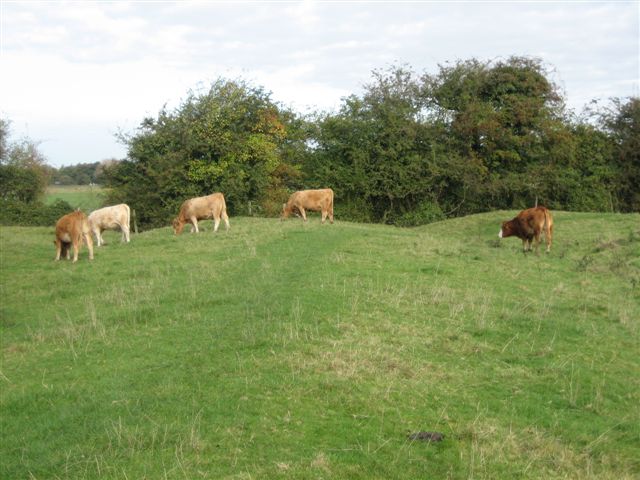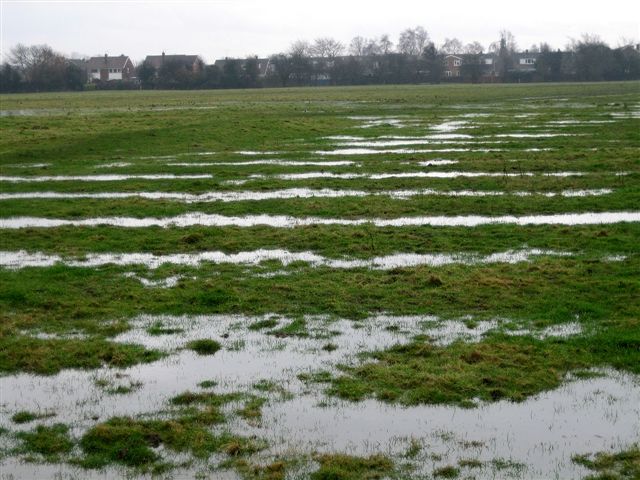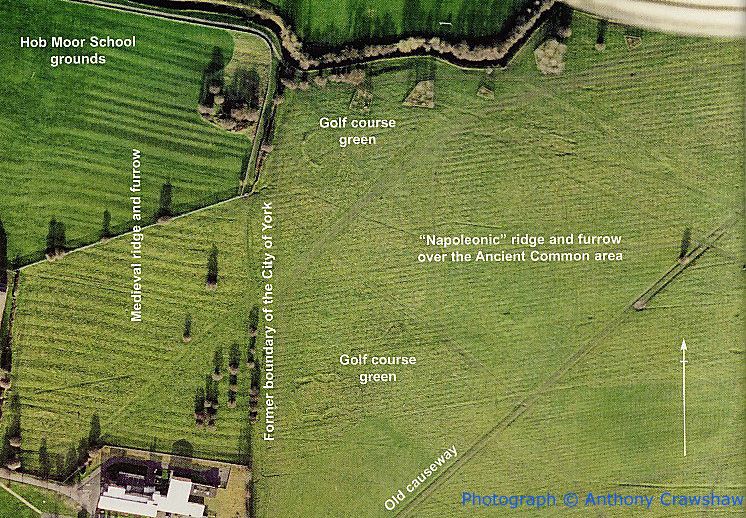The long lines of ridge and furrow which cover the whole of the Ancient Common area are by far the most extensive historical landscape feature on Hob Moor.
Ridge and furrow is the name given to the regular humps and troughs that can sometimes be found on ancient fields and is the result of ploughing over a long period of time. Fields would be broken into strips and a family would own one or more of these strips. Ploughing would start on the left-hand side of the strip. As the plough turned the soil over, it moved it to the right. On reaching the end of the strip, the plough was taken back down the other side, causing the soil to build up in the centre of the strip. Year after year, this slowly created a ridge in the centre. It is thought that this was deliberate, as the ridges provided better drainage.
There are two types of ridge and furrow to be found on Hob Moor, from the medieval and Napoleonic periods.

Medieval ridge and furrow can be found in areas not originally part of Hob Moor: North Lane Field and the area between Our Lady’s School and Hob Moor School (as well as in the grounds of Hob Moor School). The ploughing here would have been done by oxen. The ridges and furrows are very wide and deep and are curved towards the end (to assist in turning the plough).

The ridge and furrow on the central ancient common is quite different. This would have been created by a house-drawn plough pulled in straight lines. The troughs are far shallower and the distance between the peaks is a lot less – about half the distance of the medieval ones. They are known as “narrow rig” and sometimes as “Napoleonic ridge and furrow”. The latter name arose because they were created at the very beginning of the 19th century, when Britain was struggling to overcome Napoleon’s domination of Europe.
By the end of the 18th century, York had become a centre of fashion in the North and a resort for the genteel, yet in parts of the city there were areas of considerable poverty. The population was rising sharply and jobs were scarce. There were few new industries in York. The wars against France (1793-1815) created new problems: rents rose rapidly, taxation was increased and the price of corn was particularly high as a result of disastrous harvests in 1809 and 1811. Corporation records state that the poor in York at this time, “not being properly supplied with work, are become highly burthensome”.
The creation of “narrow rig” on Hob Moor (and on other areas of the York Strays) was most probably a response to these economic crises. The city authorities would have been alarmed by reports of popular disturbances involving machine-breaking (Luddism) in a number of West Yorkshire towns, as well as the spiralling costs of poor relief. The creation of a community supply of grain to be used as a supplement to the administration of poor relief would have seemed an attractive idea, and it seems likely that the Pasture Masters, on behalf of the ward freemen, would have collected rent from the Corporation in exchange for this temporary loss of pasture facilities.

